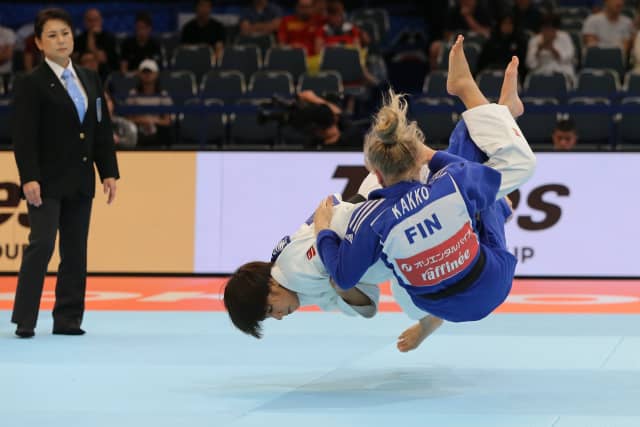At first glance it may look like this simple strategy is lacking the dynamism of modern judo, but there are times when this narrower view pays dividends, offering judoka a smaller set of choices and less chance of being distracted from the ultimate objective.
Madagascar’s 52kg athlete, Tessia Tsiorinina, only present at two previous international events, Osaka 2018 and the 2016 African Championships, threw her Belarusian opponent for two waza-ari scores at the Tokyo world championships, delivering a second round contest against world number 1, Amandine Buchard. What an experience!
Thailand’s Warasiha launched her Finnish adversary for a massive Ippon, also in the opening round, just feeling the moment and focusing on the objective. This osoto-gaeshi surprised her opponent who was still settling into the gripping and movement of the exchange, using cautious attacks. Warahisa went on to lose out to European bronze medalist Joana Ramos of Portugal in the second round.
The spectacular, instant nature of our sport really does open up so many exciting possibilities. Those not afraid to throw can forge a path through contests and gain the experience needed to develop and reach the higher level. Bravery counts!

